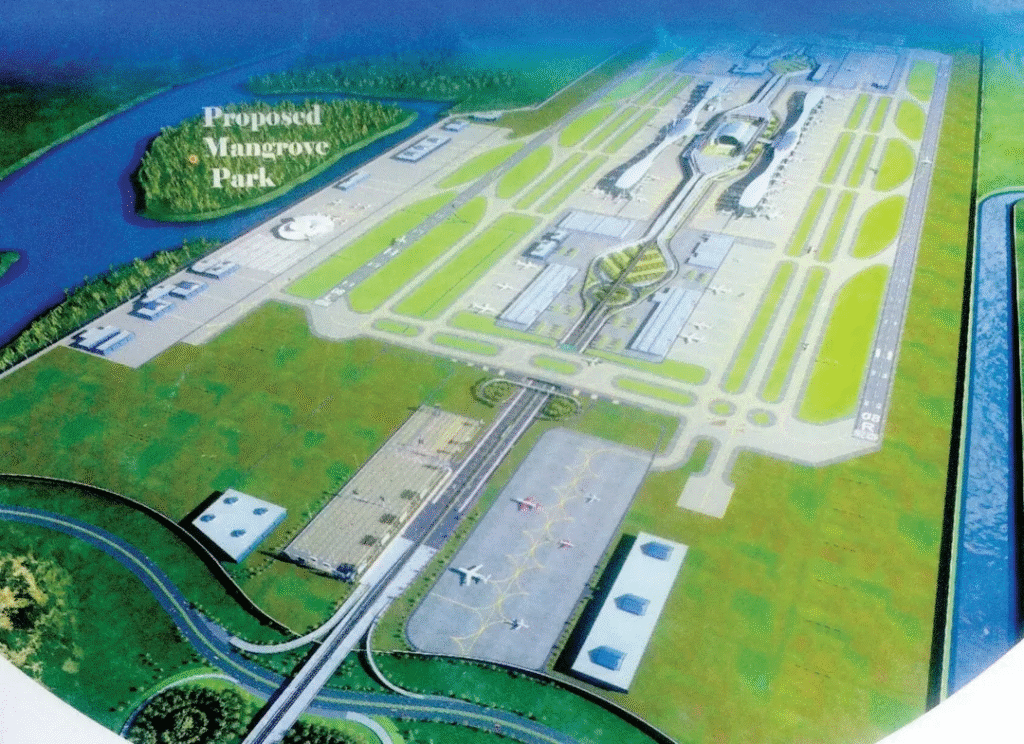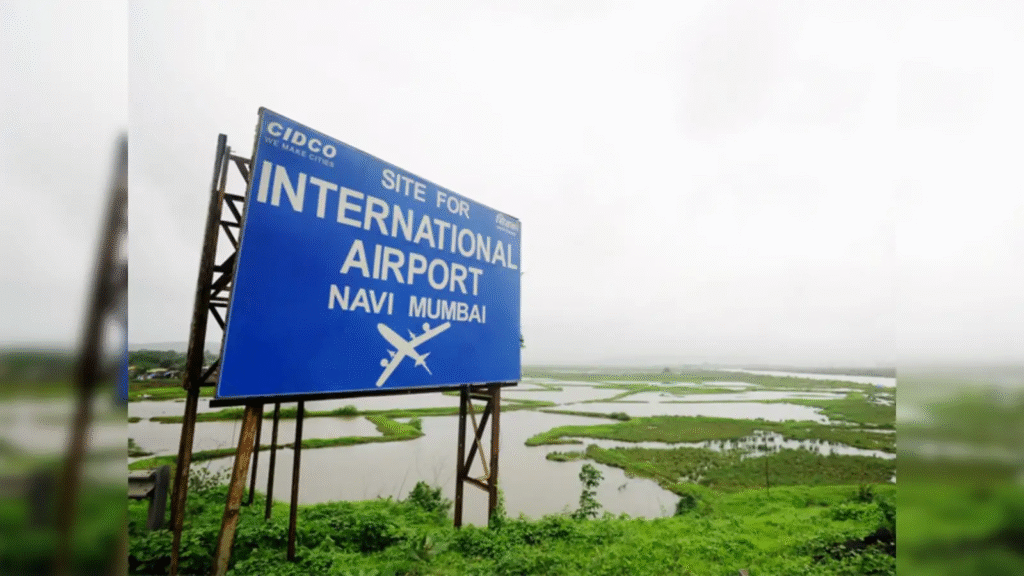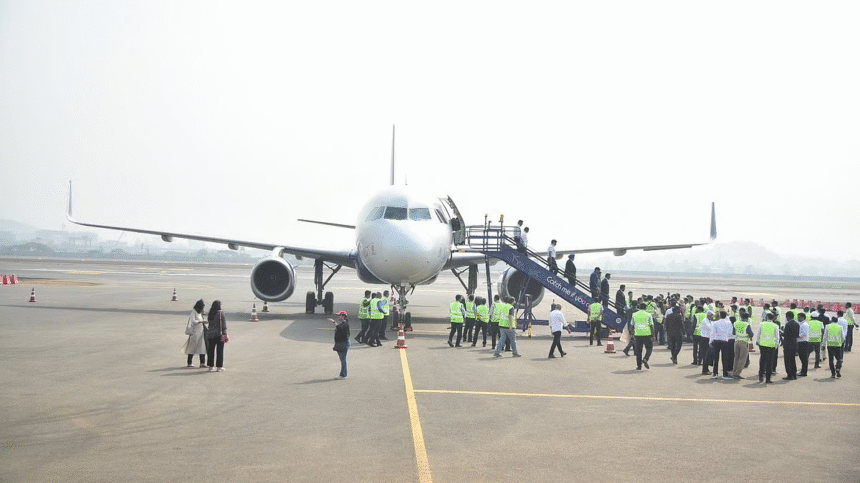Navi Mumbai Airport Rolls Out 5-Step Advanced Bird Safety Plan to Protect 200+ Flights Daily
Habitat mapping was also conducted to identify high-risk zones for bird congregation, and these zones were geo-tagged for future mitigation
NAVI MUMBAI: A combination of advanced technology, habitat modification and community engagement is at the heart of the wildlife hazard management strategy of the Navi Mumbai International Airport (NMIA), which is preparing for commercial launch later this year.
The airport has been developed by Navi Mumbai Airport Limited (NMIAL), a special purpose vehicle comprising Adani Airports Holdings Limited and CIDCO. The 1,160-hectare greenfield facility has been built near wetlands, mangroves, forests and urban settlements, making it crucial to have a comprehensive safety plan in place. NMIAL says it has taken into account these factors while designing its wildlife hazard management strategy, which it says is a benchmark for urban aviation safety.
In 2018, the Bombay Natural History Society (BNHS) was commissioned to begin a decade-long bird survey, which identified 231 bird species within a 10-km radius of the airport. The number of species recorded directly on the airport site declined, from 80 to just 26 in 2024.

Habitat modification included removal of invasive vegetation that attracts roosting bird species, and the diversion of the Ulwe River. Habitat mapping was also conducted to identify high-risk zones for bird congregation, and these zones were geo-tagged for future mitigation.
During its second phase, the pre-licensing phase, NMIAL appointed Birdgard India, a company certified to audit Airport Wildlife Hazard Management. Its assessment covered a 13-km radius around the airport.
“We have engineered the airport environment to be inherently unattractive to wildlife,” an NMIAL official said. “This involves a continuous process of eliminating any potential roosting and nesting sites. Passive controls include covering all drains with nets, and building a boundary wall reinforced with a Perimeter Intrusion Detection System (PIDS). This creates a formidable physical barrier against wildlife intrusions.”
On the ground, a highly trained wildlife management team patrols the airfield, which is divided into a grid for monitoring and response. “They are equipped with a range of bird-scaring devices and pyrotechnics to safely and humanely disperse any birds that approach operational areas. We also have specialised teams to catch stray dogs and snakes, which are then handed over to the municipality and state forest department for relocation,” the NMIAL official added.
Technology is also being deployed to strengthen the safety plan. “We are leveraging GPS-based software applications that allow for real-time monitoring, counting and recording of wildlife movements. We also conduct night surveys to ensure vigilance extends around the clock,” the official added.
The Aerodrome Environment Management Committee (AEMC), established in February, facilitates coordination between airport authorities, municipal bodies, and gram panchayats. “It oversees joint inspections and wildlife hazard management within a 13-km radius of the airport. Monthly subcommittee meetings and NGO-led awareness initiatives, such as stakeholder sessions and pamphlet outreach, foster a safety-conscious culture across local communities,” the NMIAL official added.
Environmentalists, however, are sounding a cautionary note. “The airport site was once a thriving wetland, surrounded by mangroves, mudflats and forest lands,” said Debi Goenka, executive trustee of Conservation Action Trust. “It sits between the Thane Creek Ramsar site, Karnala Bird Sanctuary, and several active wetlands. These are bird highways.”
NatConnect Foundation director B N Kumar said there will be no room for enforcement lapses, referring to illegal poultry and mutton slaughter shops not far from the airport.
The upcoming Navi Mumbai International Airport (NMIA), one of India’s most ambitious aviation projects, has announced the implementation of an advanced 5-step bird safety plan to ensure passenger and aircraft security. With more than 200+ flights expected daily once operations begin, this initiative positions NMIA among the few global airports that have adopted a comprehensive strategy to reduce bird strikes and enhance aviation safety.
Bird strikes have long been one of the most significant hazards for aircraft safety, especially in regions with dense bird populations and wetlands. According to the Directorate General of Civil Aviation (DGCA), India reports over 1,000 bird strike incidents annually, with Mumbai and Delhi airports often ranking among the highest risk zones.
Given Navi Mumbai’s geographical location—surrounded by mangroves, wetlands, and creeks—the airport faces a higher risk of avian interference compared to traditional inland airports. Aviation experts have stressed that unless addressed proactively, bird strikes could lead to severe disruptions, flight delays, and even catastrophic accidents.
Recognizing this challenge, the City and Industrial Development Corporation (CIDCO), along with the airport operator, has developed a multi-layered bird safety plan using the latest technology and ecological management practices.

The Navi Mumbai International Airport Authority has unveiled a holistic strategy consisting of five major components aimed at mitigating risks while preserving the region’s delicate ecosystem.
Large stretches of wetlands and open garbage dumping grounds attract migratory and resident birds. The airport has partnered with environmental agencies to:
Relocate waste disposal sites.
Improve waste management practices in surrounding areas.
Convert bird-attracting wetlands near flight paths into controlled ecological zones.
NMIA will be the first airport in India to install a radar-driven avian detection and monitoring system, capable of tracking bird movements in real time. This system allows air traffic control to alert pilots about potential threats, enabling timely flight path adjustments.
The airport will deploy bio-acoustic devices that emit distress calls to discourage bird presence near runways. Additionally, laser deterrent systems will be used during early mornings and evenings when bird activity is highest.
In collaboration with licensed wildlife handlers, NMIA plans to introduce trained falcons to patrol the skies. This eco-friendly approach leverages natural predator-prey dynamics, ensuring minimal ecological disruption while maintaining safety.
Local fishermen and residents living near the airport have been engaged in bird hazard awareness workshops. Incentives are being provided to reduce practices that attract large bird flocks, such as open-air fish drying and waste dumping.
Bird strike prevention strategies at airports such as Heathrow (UK), JFK (US), and Changi (Singapore) have inspired NMIA’s approach. These airports have successfully integrated technology, community programs, and ecological balance to drastically reduce avian risks.
By aligning with global benchmarks, Navi Mumbai International Airport aims to meet ICAO (International Civil Aviation Organization) safety standards from day one of operations.
A senior aviation safety expert commented:
“Navi Mumbai Airport’s bird safety plan is a pioneering step for India. The use of radar detection and falconry is a game-changer that could serve as a model for other Indian airports.”
Environmentalists, while cautious, have praised the emphasis on habitat management rather than indiscriminate culling, which has been controversial in other parts of the world.
One of the key challenges for NMIA is balancing environmental conservation with aviation development. Navi Mumbai is home to thousands of migratory birds, including flamingos, egrets, and herons, which arrive seasonally in the wetlands.

The airport authority has pledged to work with wildlife experts and NGOs to ensure that while safety is prioritized, ecological diversity is not compromised. Specific bird sanctuaries are being developed further away from flight paths to serve as safe havens for migratory species.
With the new bird hazard management plan in place, NMIA expects to:
Reduce bird strike incidents by 70% within the first three years.
Enhance overall passenger and pilot confidence.
Minimize flight delays and cancellations due to wildlife interference.
Position itself as India’s safest eco-sensitive airport.
The initiative also ensures cost savings for airlines, as
Read Also : UK Announces $12 Million Aid Package to Support 800+ Afghanistan Earthquake Victims








